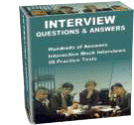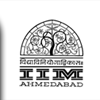The retailing industry has been present in our country through history and is considered as one of the largest sectors in the Indian economy, contributing to around 14% to the GDP, and employing around 7% of the total population.. For decades, retailing in India has been highly fragmented, i.e., unorganized, due to the presence of huge number of small mom-n-pop stores. As per Images F&R Research 'India Retail Report 2007', organized retailing in India accounts for 4.6% (Rs. 55,000 Crores or $ 12.4 Billion) of Rs. 120,000 Crores or $ 270 Billion retail market with an expected 40% plus annual growth rate, and is expected to grow to Rs. 2,00,000 Crores, i.e., $ 45 Billion by 2010. During the period 2005- 2006, the leading retailers' sales growth was 50-100%.
While retailing industry is present for centuries, it is only in the recent times that it has witnessed so much dynamism and corporate attention. It is the latest bandwagon that has witnessed hordes of big players like TATA, Birla, Reliance, Pantaloon Group, etc., leaping into it. The entry of big players in retailing has caused a major revolution in its marketing strategies and innovations. Now retail sector, being considered as the most dynamic and attractive sector in India, is going through a transition phase. For a long time, the corner grocery store was the only choice available to the consumer. This is slowly giving way to international formats of retailing. The traditional food and grocery segment has seen the emergence of hypermarkets / supermarkets / grocery chains (FoodWorld, Subhiksha, Apna Bazaar, Big Bazaar, etc.) and fast food chains (McDonalds, Dominos, etc.).
Concerns of Retailers
Retailers are faced with many issues as they attempt to be successful. The key issues include:
* Customer Satisfaction � Retailers know that satisfied customers are loyal customers. Consequently, retailers must develop strategies intended to build relationships that result in customers returning to make more purchases.
* Ability to Acquire the Right Products � A customer will only be satisfied if they can purchase the right products to satisfy their needs. Since a large percentage of retailers do not manufacture their own products, they must seek suppliers who will supply products demanded by customers. Thus, an important objective for retailers is to identify the products customers will demand and negotiate with suppliers to obtain these products.
* Product Presentation � Once obtained products must be presented or merchandised to customers in a way that generates interest. Retail merchandising often requires hiring creative people who understand and can relate to the market.
* Traffic Building � Like any marketer, retailers must use promotional methods to build customer interest. For retailers a key measure of interest is the number of people visiting a retail location or website. Building "traffic" is accomplished with a variety of promotional techniques such as advertising, including local newspapers or Internet, and specialized promotional activities, such as coupons.
* Layout� For store-based retailers a store's physical layout is an important component in creating a retail experience that will attract customers. The physical layout is more than just deciding in what part of the store to locate products. For many retailers designing the right shopping atmosphere (e.g., objects, light, sound) can add to the appeal of a store. Layout is also important in the online world where site navigation and usability may be deciding factors in whether of a retail website is successful.
* Location � Where to physically locate a retail store may help or hinder store traffic. Well placed stores with high visibility and easy access, while possibly commanding higher land usage fees, may hold significantly more value than lower cost sites that yield less traffic. Understanding the trade-off between costs and benefits of locations is an important retail decision.
* Keeping Pace With Technology � Technology has invaded all areas of retailing including customer knowledge (e.g., customer relationship management software), product movement (e.g., use of RFID tags for tracking), point-of-purchase (e.g., scanners, kiosks, self-serve checkout), web technologies (e.g., online shopping carts, purchase recommendations) and many more.
Types of Retail Outlets
There are many ways retailers can be categorized depending on the characteristics being evaluated. For our purposes we will separate retailers based on six factors directly related to major marketing decisions:
* Target markets served
The first classification looks at the type of markets a retailer intends to target. Retailers can be classified into three: Mass Market, Specialty Market and Exclusive Market.
*Product offerings
Under this classification retailers are divided based on the width (i.e., number of different product lines) and depth (i.e., number of different products within a product line) of the products they carry.
- General Merchandisers
- Multiple Lines Specialty Merchandisers
- Single Line Specialty Merchandisers
* Pricing Structure
Retailers can be classified based on their general pricing strategy. Retailers must decide whether their approach is to use price as a competitive advantage or to seek competitive advantage in non-price ways.
1. Discount Pricing
2. Competitive Pricing
3. Full Price Pricing
* Promotional Emphasis
Retailers generate customer interest using a variety of promotional technique, yet some retailers rely on certain methods more than others as their principle promotional approach.
1. Advertising
2. Direct Mail
3. Personal Selling
* Distribution Method
Retailers sell in many different formats with some requiring consumers visit a physical location while others sell to customers in a virtual space. It should be noted that many retailers are not tied to a single distribution method but operate using multiple methods.
1. Store-Based Sellers
- Stand-Alone
- Strip-Shopping Center
- Shopping Area
- Regional Shopping Mall
2. Non-Store Sellers
- Online Sellers
- Direct Marketers
- Vending
* Service Level
Retailers attract customers not only with desirable products and affordable prices, but also by offering services that enhance the purchase experience. There are at least three levels of retail service:
1. Self-Service
2. Assorted-Service
3. Full-Service
* Ownership Structure
Finally, we can categorize retailers based on the ownership structure of the business.
- Individually Owned and Operated
- Corporate Chain
- Corporate Structure
- Contractually Licensed and Individually Operated
Conclusion
The Indian Retail sector is estimated to have a market size of about $180 billion, but the organized sector represents only 2% share of this market. Liberalization of Indian Economy has brought opening for consumer goods this has helped many MNC,s to serve with wide variety of choices to Indian consumers. Consumers has shifted there demands towards foreign brandslike Pizza hut, Mc donalds etc. Internet has also been an tool for this Revolution as Indian consumers are more accessible to the growing influences of domestic and foreign retail chains.












